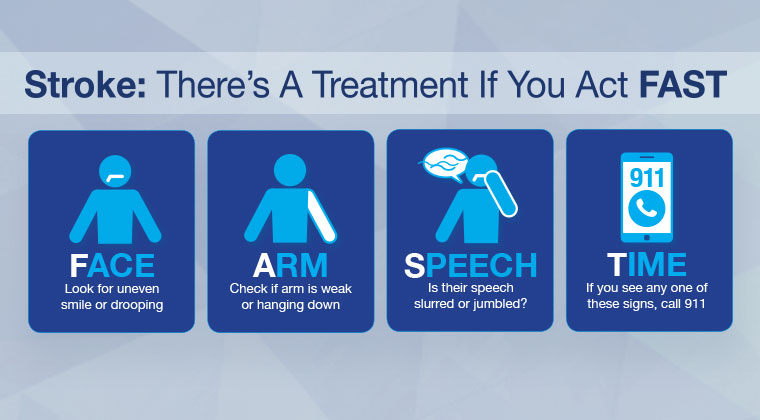May is stroke awareness month at WMHS
Every year, UPMC Western Maryland treats approximately 400 stroke patients. UPMC Western Maryland, which is designated as a Primary Stroke Center, has a neurologist available around the clock and provides the most up-to-date stroke care available using latest research as a guide. Every May, in conjunction with the American Heart Association’s stroke month campaign, UPMC Western Maryland promotes stroke awareness.
Simply put, a stroke is a brain attack. It can happen to anyone at any time. It occurs when blood flow to an area of the brain is cut off. When this happens, brain cells are deprived of oxygen and begin to die. When brain cells die during a stroke, abilities controlled by that area of the brain – such as memory and muscle control – are lost.
How a person is affected by their stroke depends on where the stroke occurs in the brain and how much the brain is damaged. For example, someone who had a small stroke may only have minor problems such as temporary weakness of an arm or leg. People who have larger strokes may be permanently paralyzed on one side of their body or lose their ability to speak. Some people recover completely from strokes, but more than two thirds of survivors will have some type of disability.
The statistics for strokes are eye-opening:
- Each year nearly 800,000 people experience a new or recurrent stroke.
- A stroke happens every 40 seconds.
- Stroke is the fifth leading cause of death in the United States and the leading cause of adult disability.
- Every four minutes someone dies from stroke.
- Up to 80 percent of strokes can be prevented.
Recognition of a stroke and calling 9-1-1 will determine how quickly someone will receive help and treatment. Getting to a hospital rapidly will more likely lead to a better recovery. The F.A.S.T. system is an easy way to remember and identify the most common symptoms of a stroke. F stands for FACE. Ask the person to smile. Does one side of their face droop? A stands for ARMS. Ask the person to raise both arms. Does one arm drift downward? S stands for SPEECH. Ask the person to repeat a simple phrase. Is their speech slurred or strange? T stands for TIME. If you observe any of these signs, call 9-1-1 immediately and note the time of the first symptoms. This information is important and can affect treatment decisions.

Sometimes other symptoms appear, separately, in combination or with the FAST signs. Knowing the signs and symptoms of a stroke is the first step to ensuring medical help is received immediately.
These symptoms include:
- Sudden numbness or weakness of the face, an arm or a leg, especially on one side of the body.
- Sudden confusion, trouble speaking or understanding.
- Sudden trouble seeing in one or both eyes.
- Sudden trouble walking, dizziness or loss of balance and coordination.
- Sudden severe headache with no known cause.
For each minute a stroke goes untreated and blood flow to the brain continues to be blocked, a person loses about 1.9 million neurons. This could mean that a person’s speech, movement, memory and much more can be affected.
As mentioned above, UPMC Western Maryland is designated as a Primary Stroke Center by the Maryland Institute for Emergency Medical Services System. Similar to the concept used for Maryland’s trauma centers, this designation indicates UPMC Western Maryland’s commitment to having the resources in place to maintain high standards for stroke care.
UPMC Western Maryland holds both the Get With the Guidelines Gold Plus Achievement Award for stroke, as well as the Target Honor Roll Elite Award – both awarded by the American Heart Association.
For more information about stroke care at UPMC Western Maryland or Stroke Awareness Month, contact UPMC Western Maryland Stroke Coordinator Jennifer Suter at 240-964-1081.
 Skip to main content
Skip to main content
